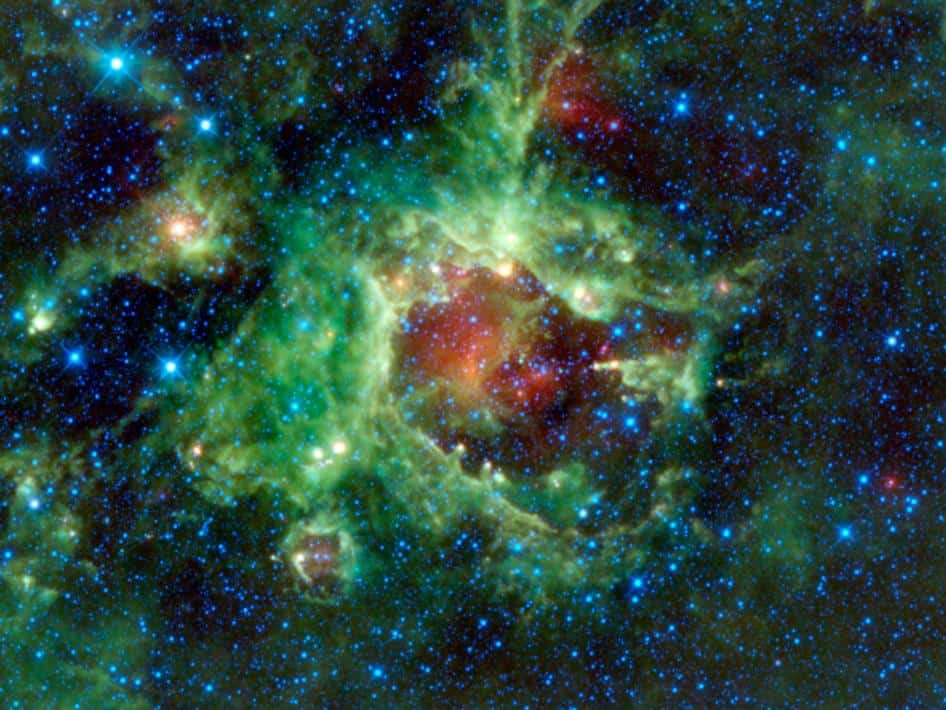The Cosmos with Sh2-284 IC443 The Jellyfish Nebula
NASA’s Wide-field Infrared Survey Explorer, or WISE, captured this image of a star-forming cloud of dust and gas located in the constellation of Monoceros. The nebula, commonly referred to as Sh2-284, is relatively isolated at the very end of an outer spiral arm of our Milky Way galaxy. The most interesting features in Sh2-284 are what astronomers call “elephant trunks.” Elephant trunks are monstrous pillars of dense gas and dust. In this WISE image, the trunks are seen as small columns of gas stretching towards the center of the void in Sh2-284, like little green fingers with yellow fingernails. The most notable one can be seen on the right side of the void at about the 3 o’clock position. It appears as a closed hand with a finger pointing towards the center of the void. That elephant trunk is about 7 light-years long. Deep inside Sh2-284 resides an open star cluster, called Dolidze 25, which is emitting vast amounts of radiation in all directions, along with stellar winds. These stellar winds and radiation are clearing out a cavern inside the surrounding gas and dust, creating the void seen in the center. The Sh2-284 nebula is classified as an HII region. HII regions go hand in hand with star formation. They’re hot, young, bright stars, with ages ranging from 1.5 to 13 million years. In comparison, the sun is about 4.6 billion years old. The colors used in this image represent specific wavelengths of infrared light. Blue and cyan (blue-green) represent light emitted at wavelengths of 3.4 and 4.6 microns, which is predominantly from stars. Green and red represent light from 12 and 22 microns, respectively, which is mostly emitted by dust.
